1,577 days, 2,409 entries ...
Newsticker, link list, time machine: HOLO.mg/stream logs emerging trajectories in art, science, technology, and culture––every day
“Situated Listening,” an exhibition by Hong Kong-based composer and sound artist Samson Young, opens at Kestner Gesellschaft in Hannover (DE). Featured are The Travelers and the Listeners (2023), a collage of musical films inspired by a Walter de la Mare poem, and Variations of 96 Chords in Space (2023, image), a video installation in which a palette of 96 colours (each linked to a chord played by violist William Lane) blur across screens “in endless combinations, largely systematic, partly arbitrary.”
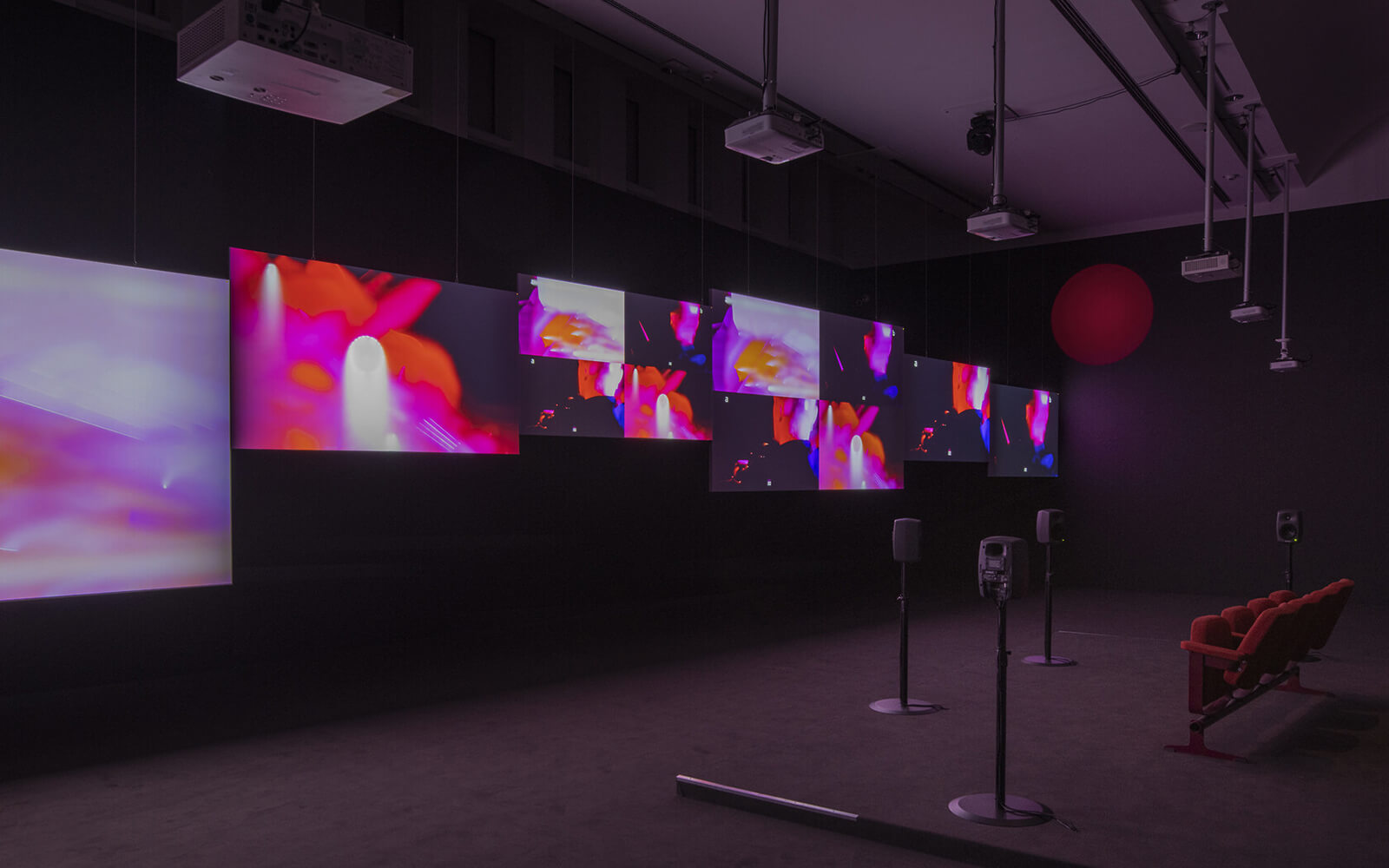
“We discussed the idea of the ghost in the machine, Deux ex machina, and the spirituality that emanates from unknown entities. Then we asked: what if that could be trans? What if there was a way to trans that?”
“Both The House of Dust and Cree# are microworlds, homes for forms of computing and expression that fall outside of the traditional purview of ‘information technology’ and industry-focused coding practices and tools.”
Against the backdrop of the Los Angeles County Museum of Art (LACMA) retrospective “Coded: Art Enters the Computer Age, 1952-1982,” four artists gather to ‘fill’ Casey Reas’ software installation An Empty Room (2023) with intimate, evocative gestures. More happening than performance night, the program fittingly called “A Full Room” brings together Edgar Fabián Frías, Lauren Lee McCarthy (image), Romi Ron Morrison, and Reas himself who, through song, poetry, and prayer, ask a vexing question: “What is social software?”
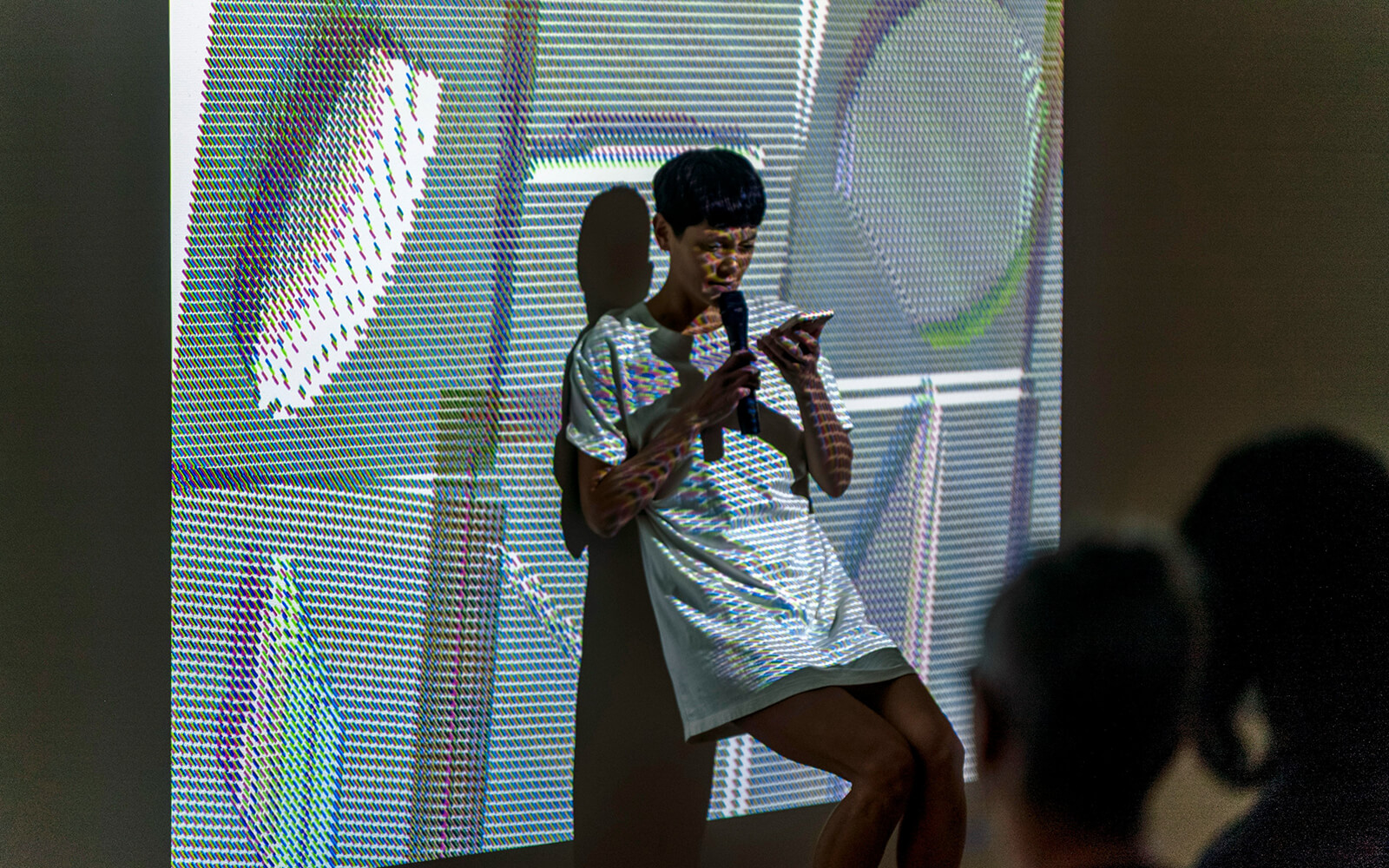
“Like powering an engine with the methane that comes from decomposing corpses in a graveyard.”
Matt Nish-Lapidus’ solo exhibition “The Path” opens at Écart, Rouyn-Noranda (QC, CA), presenting recent computational and sculptural works that draw on Kabbalah mysticism and the educational programming language Logo to explore personal computing, linguistics, and materiality. In the piece Allegory (2020, image), for example, the Canadian artist uses vocabulary from the book Mindstorms (1980), written by Logo-inventor Seymour A. Papert, and an 19th Century William Wordsworth sonnet to generate “statements about other ways the world could be.”
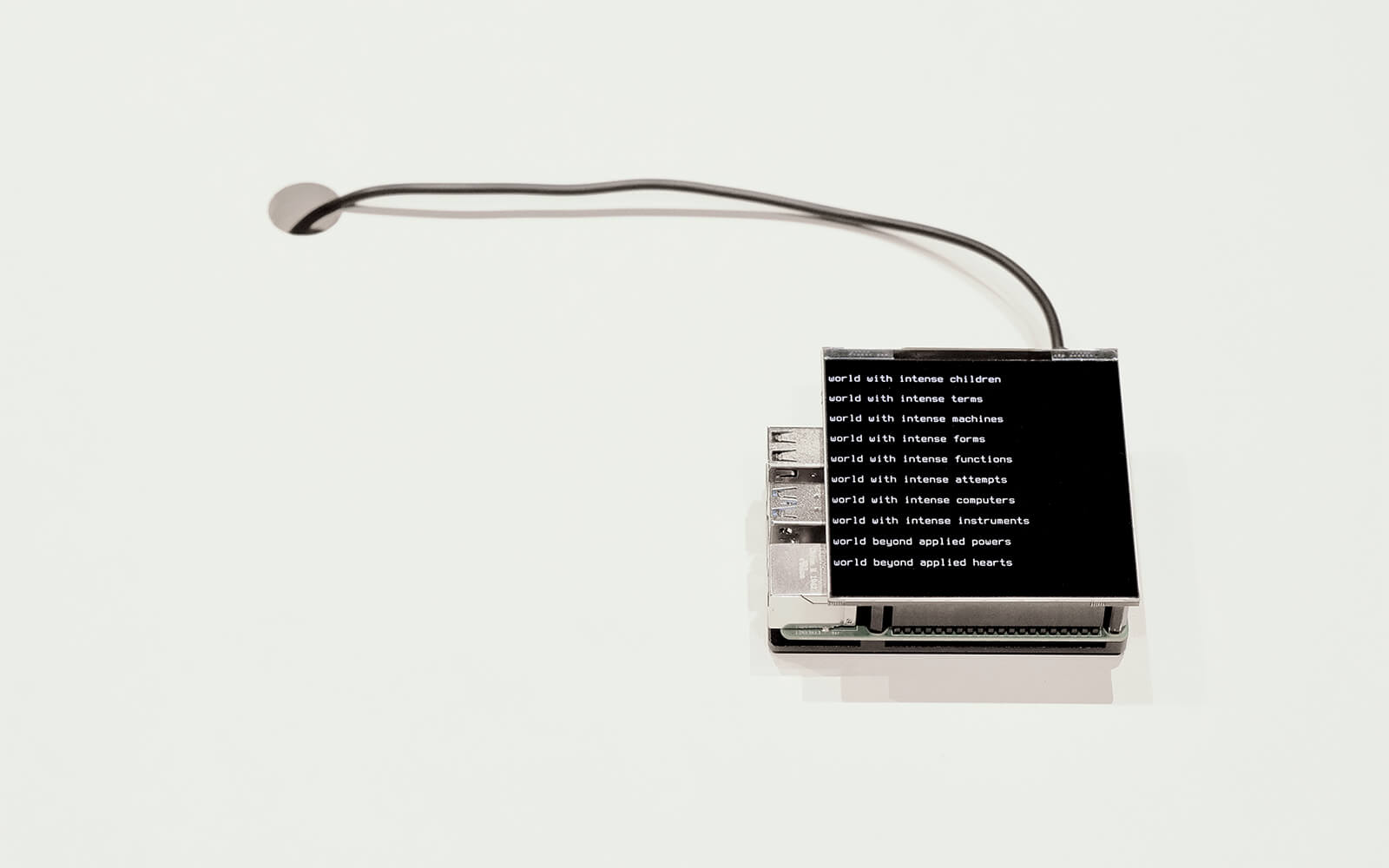
“DO COMPUTERS WORRY YOU,” an exhibition of recent work by Canadian artist Matt Nish-Lapidus opens at Toronto’s Collision Gallery. Presented alongside “Greenlight: Carlaw,” a companion exhibition by Simon Fuh, Nish-Lapidus deploys assemblies of custom networks and Printed Circuit Boards (PCBs) combining “industrial and domestic materials, found texts, and bespoke algorithms” into a materialized polemic for more poetic (and personal) modes of computation.
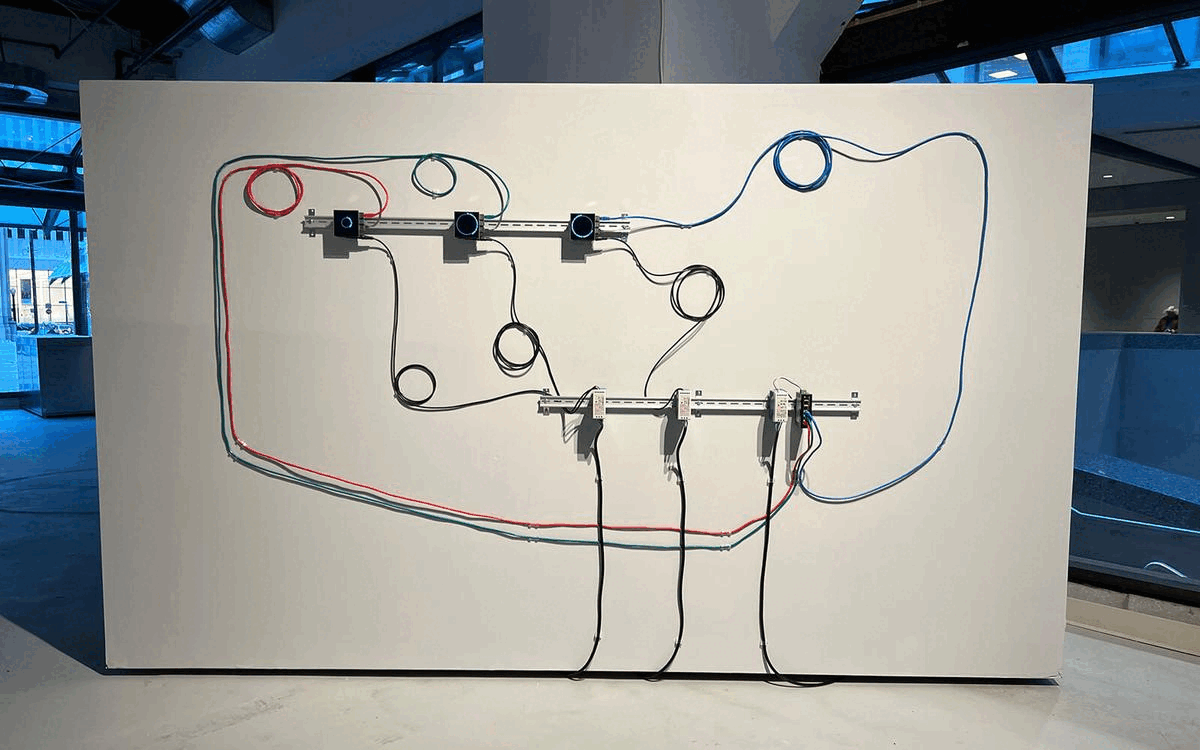
Much to the delight of writers, concrete poets, and ASCII artists, creative coders Play and EREN launch Typed, a text-based NFT market place on the Tezos chain. Featuring a spartan interface reminiscent of the Hic et Nunc glory days, Typed allows minting of bare-bones text entries, inviting all kinds of character-based experimentation. Within hours of being announced on Twitter, the platform was bustling with activity (image: Leander Herzog’s adaption of his generative art hit Agglo).
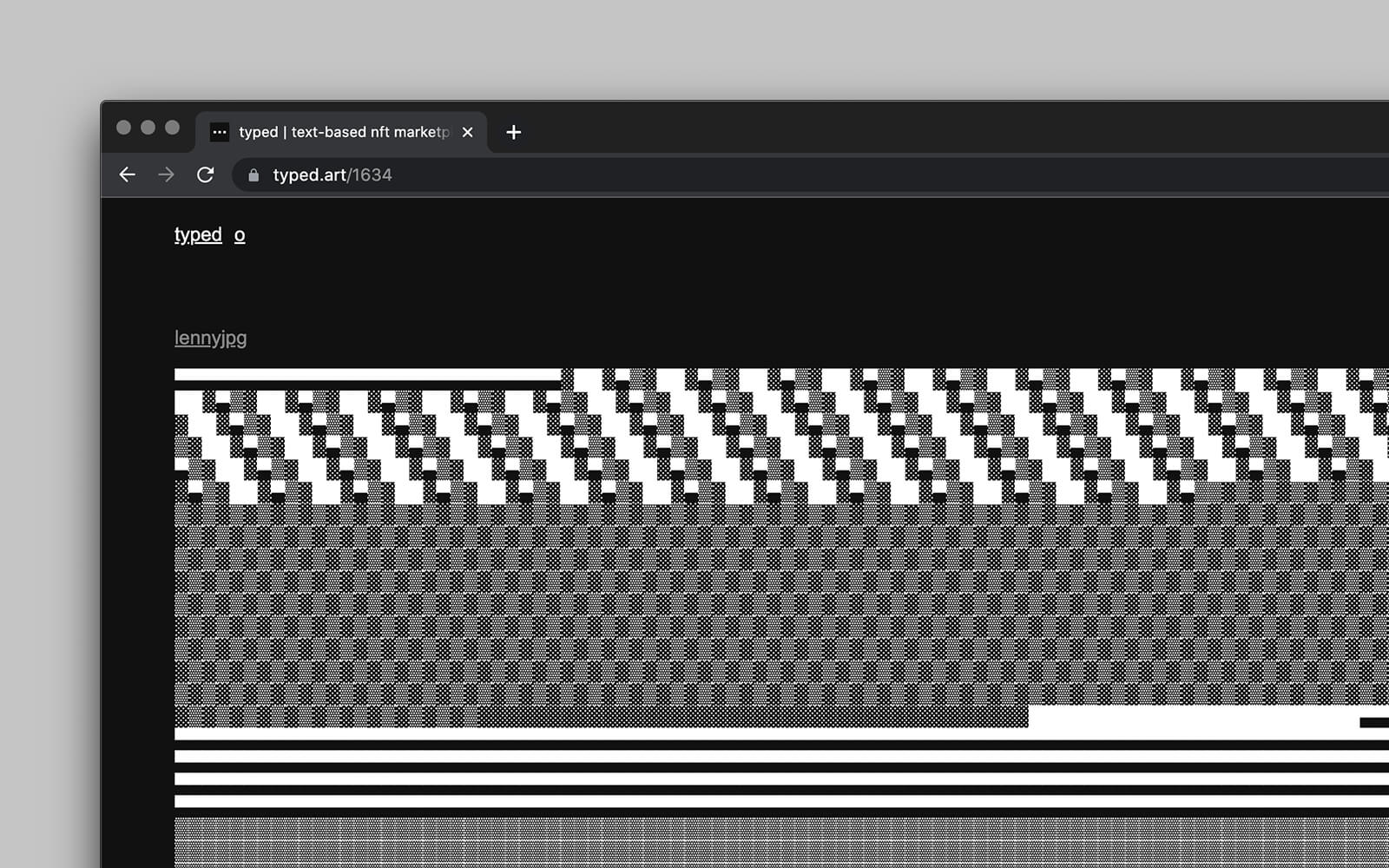
“New Art City Festival 2022” opens online, on the eponymous virtual exhibition platform. Leaning into its “Architectures of Abundance” subtitle, it bundles digital sculpture, audiovisual experiments, and code poetry from artists including Anna Nazo, Celine Lassus, Grimm, Henrique Fagundes—100 artists across 31 exhibitions. Of note: “Diffracted Sensibilities Artificial Gaze” (hatched within a Royal College of Art course), and the first issue of H1YBRID ART JOURNAL.

“Conceptually, working with NFTs has inspired me to continue evolving my hypothesis that poetry is a technology, a durable, adaptive data storage system for preserving humanity’s most valuable information—poetry as the original blockchain.”
Infiltrating Ender Gallery’s Minecraft server with his generative image systems, American artist Travess Smalley turns the in-game exhibition space into “a surreal reading experience” via a custom texture pack. Developed during his residency, “Change Language Resource Pack” replaces all images and textures with randomly generated language, resulting in “a concrete poem, that turns the familiar Minecraft world into an abstract, austere, and newly dangerous place (be careful identifying lava!).”
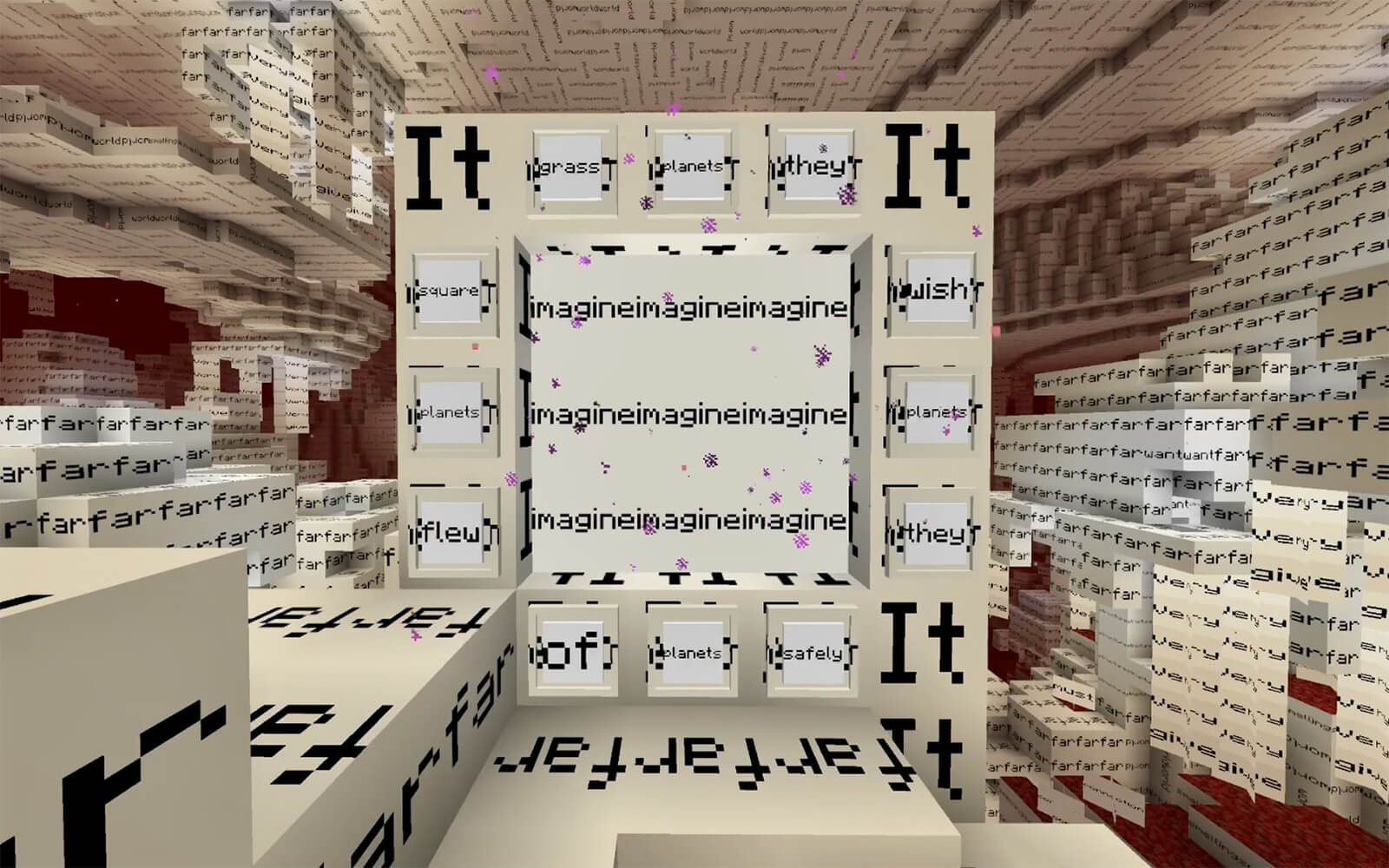
Matt Nish-Lapidus
Work, Life, Balance
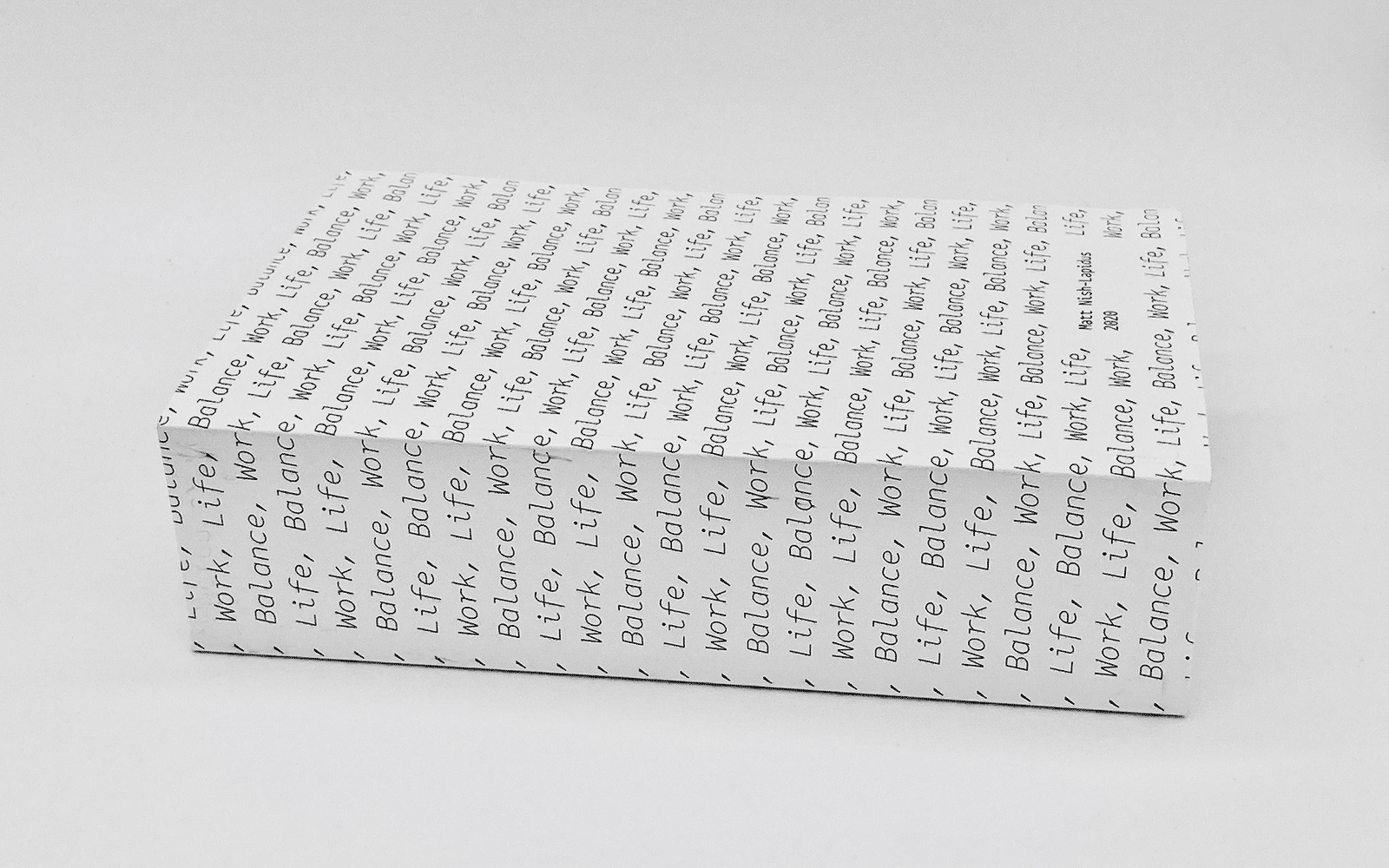
Daily discoveries at the nexus of art, science, technology, and culture: Get full access by becoming a HOLO Reader!
- Perspective: research, long-form analysis, and critical commentary
- Encounters: in-depth artist profiles and studio visits of pioneers and key innovators
- Stream: a timeline and news archive with 1,200+ entries and counting
- Edition: HOLO’s annual collector’s edition that captures the calendar year in print
